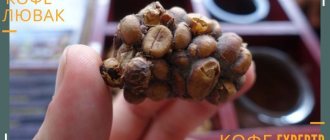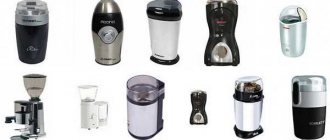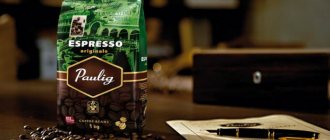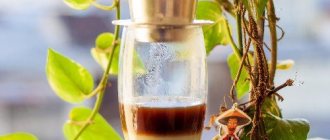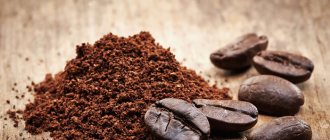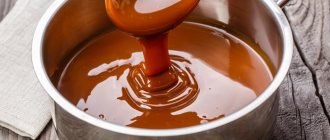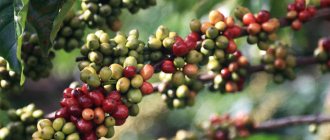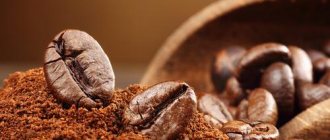Here's an introduction to coffee aroma and a basic guide to espresso tasting.
Drinking coffee mindfully is not an easy task, especially when it comes to recognizing flavors. The brain forms an impression instantly, but under the influence of a long list of factors. Among them: the color and external attractiveness of the drink, its taste and density, tactile sensations from the temperature of the cup and the material from which it is made and, of course, aroma!
The processes of our perception occur simultaneously and mostly unconsciously. Awareness implies that you should pay attention to each of them. You can tell about the character of coffee only by tracking the changes in the aroma as it cools: first there are bright caramel notes, reminiscent of roasted almonds, then they disappear, leaving a fruity taste, etc.
Tasting good coffee will be an interesting journey into the world of discovery if you try to master the appropriate technology.
Like any technique, step-by-step assessment of espresso perception requires practice. But in the end, it helps to understand the character of coffee more deeply, allows you to exchange your impressions and speak the same language with knowledgeable people.
How and when do aromas arise?
There are 3 main segments in coffee aromas:
- enzymatic aromas. In Russian sources they are often called enzymatic;
- aromas of caramelization or “burnt sugar aromas” (sugar browning);
- aromas of dry distillation.
Aromas are formed during the three roasting phases that coffee beans go through.
Espresso aroma - the result
three phases of roasting coffee beans.
Enzymatic or enzyme flavors
This segment groups aromas that are determined by environmental factors affecting the coffee tree during its growth.
Such factors include: the amount and frequency of precipitation, temperature, amount of sun, site height, soil mineralization and density, and the presence of shading plants. All of the above affects what substances and in what quantities coffee beans can be stored.
The more diversity there is in the chemical elements, the more potential the grain has for developing flavors. This determines the difference in the price of raw coffee: quality has its price. Richer coffee varieties require more care, grow at higher altitudes, are more difficult to access by machinery and are therefore more difficult to grow compared to the huge plantations in the plains, where agricultural processes are mechanized.
The aromas of this group are formed at the early stage of roasting. They will be lost if frying is long. In dark varieties of coffee, they do not remain at all. This explains the trend towards light roasted coffee beans. But this does not mean that light roasting guarantees great taste. It all depends on the quality of the raw materials and proper roasting.
The main groups of aromas distinguished in the enzymatic segment: floral, fruity, herbal.
Caramelization flavors
One of the key chemical processes that occurs during roasting is the Maillard reaction, a chemical reaction between an amino acid and sugar that occurs when heated. In parallel with the Maillard reaction, caramelization occurs, which rearranges the sugar present in the coffee.
These processes create new aromas and consume chemicals that could potentially create other aromas. So, during the roasting process you can feel, for example, the aroma of vanilla, which disappears or turns into something else.
The determining factors in both processes are the temperature and duration of roasting.
In short, the longer the roasting, the simpler and more uniform the aroma becomes.
The main groups of flavors formed during the caramelization process: nutty, caramel, chocolate.
Dry distillation
The term "dry distillation" is a softened version of the combustion process of coffee beans that occurs in the last phase of roasting. During this phase, the cellular structures in the beans are burned and several (actually few) additional aromas are produced. At the same time, some of the aromas that arose in previous phases disappear.
Espresso coffee can be “dry distilled” to serve several purposes. Firstly, to hide or soften some unpleasant notes in the aroma. Secondly, it helps reduce the acidity of the future drink.
Based on the above, for high-quality grains, other methods of reducing acidity are usually used by roasting them in a gentle mode, preventing them from burning.
The main groups of aromas formed during the dry distillation process are: resinous, spicy, charcoal.
External signs of roasting phases
Coffee aromas are formed in three roasting phases. It is important to understand that there are no clear boundaries between the phases. The transition depends both on the temperature and duration of heating, and on the characteristics of the feedstock. The following factors play a role: the density of the grain (cellular structure), the water content in it, the temperature of the grains before roasting.
The “clicks and crackles” rule, proven by many roasters, helps to distinguish the roasting phases from each other. Loud clicking sounds are heard as the kernels expand and expand when heated, much like popcorn. These sound effects correspond to the caramelization phase. A slight constant cracking sound is heard when small cracks appear in the grain. This means that the grain has entered the dry distillation phase.
What you need to know about coffee processing
There are several ways to process coffee cherries, but the most popular are dry and washed. They affect the taste of coffee differently due to differences in fermentation processes.
When dry processing
The coffee tastes softer and sweeter because the grain is fermented directly in the pulp of the berry, at which time migration of sugars and flavoring substances occurs.
When washed processing
The coffee turns out denser and more acidic. The berries are collected on special machines, the skin and pulp are removed from them, and they are stored in tanks with or without water. While the grains lie in the tanks, bacteria eat sugars from the pulp; after a couple of days, the remaining pulp is simply washed off with water, and the grains are sent to dry.
| Recommendation. If you want to know the conditions in which the coffee was grown and how it was processed, buy the beans directly from the roasters. Specialty coffee always knows the processing method and the growing region. If you buy the highest quality specialty grain, you can even find out the name of the farmer who grew it. Finding such grain in Russia is not a problem now - many roasters sell it. |
Decaffeinated coffee
There is a grain that contains no more than 0.3% caffeine. If it is decaffeinated with high quality, then there will be no difference in taste from regular coffee. Drinks made from this grain can be offered to guests who do not drink caffeine.
| Keep separate records of grain of different types, monitor its write-off and capitalize it through the cash terminal in a couple of clicks Quick Resto system will help . You will be able to create documents necessary for catering (technical maps, cost estimates), keep track of revenue and expenses, monitor your business from anywhere in the world and attract more guests through a mobile application with promotions, push notifications and pre-orders. Find out more: About the Quick Resto system and applications About our team’s services and training on how to use the system |
At what point should you evaluate the aroma of coffee?
We looked at the moments at which the coffee bean acquires its aroma. Now let's see at what point we can evaluate the nuances of the aroma.
To get espresso, you need to grind the grain, brew a portion of the required volume, taste the drink, allowing it to act on us. It is in this order that we will consider the groups of aromas that are consistently revealed in espresso:
- grinding aromas;
- brew aromas;
- aromas perceived by the nose before the first sip;
- aftertaste aromas.
Grinding (Fragrance)
Here we feel the aromas that are revealed during the process of grinding grain in a coffee grinder. We only have a couple of minutes to appreciate this scent. Coffee loses volatile aromatic substances very quickly and they can no longer be found in the cup.
At this stage, the aromas of the enzymatic/enzymatic group are revealed:
- floral (tea rose, cardamom, coriander, etc.);
- fruit (lemon, apple, apricot, cherry, etc.);
- herbaceous (onion, garlic, cucumber, garden peas, etc.).
Tea leaves (Aroma)
When contacting hot water, other aromas are released. Freshly roasted coffee releases carbon dioxide, the coffee brew begins to foam and “bloom.”
Here the enzymatic aromas continue to be felt and are joined by the aromas of the caramelization stage:
- Nut (walnut, hazelnut, roasted peanut, etc.)
- Caramel (honey, maple syrup, roasted almonds, roasted hazelnuts, etc.)
- Chocolate (chocolate, vanilla, milk chocolate, etc.)
Nose
This includes the aromas we perceive when we drink coffee. From the moment you lift the cup to your mouth until the first sip.
Enzymatic aromas are muted, the aromas of caramelization dominate and the aromas of the dry distillation stage begin to be perceived - spicy, tart, resinous notes (cedar, eucalyptus, pepper, cloves, pipe tobacco, etc.), but sometimes just the smell of burnt grain.
Roasting beans: how it affects the taste of coffee
Roasting is needed to bring out the flavor of the grain. There are three main levels: light, medium and dark. But they do not affect the taste of coffee as much as the roast profile.
The profile characterizes exactly how the grain is roasted: at what temperature, how long the process lasts, at what speed the grain is heated and how quickly the grain is cooled.
Therefore, keep in mind that the taste will depend not only on the grain and the roasting method, but on the roaster and the profile he selects.
If you order green beans roasted, you can discuss your wishes with the roaster - what flavor shades you would like to get.
What can you tell by the aroma of grain?
There is an opinion that the taste of coffee can be determined by the aroma of the grain, but this is not entirely true. A person distinguishes only five tastes - sour, salty, bitter, sweet and umami (meat taste), but there are a lot of smells. Therefore, aroma cannot give a complete picture of taste.
But one thing you can definitely understand from the aroma is that the coffee is not tasty. You begin to understand this with experience - you feel that the aroma is, for example, burnt.
"Body" of coffee
There is another important concept when we talk about the taste of coffee. This is his "body". This is the name for the tactile sensations on the tongue when we drink coffee.
A high-quality “body” can be dense, round, smooth, silky, juicy, tea-like, syrupy, creamy, enveloping, velvety and creamy. Poor quality - watery, dry, astringent, rough, gritty, sandy, dusty and tart.
The formation of the “body” is influenced by the processing of the coffee berry, the roasting of the beans and the method of preparing the drink. So, for example, a lighter “body” is obtained when the berry is processed wet, and a denser one is obtained when processed dry.
Sample preparation
Frying The sample should be roasted 24 hours before cupping and should rest for at least 8 hours. Frying should be light or light-medium. Frying must be completed in a minimum of 8 minutes and a maximum of 12 minutes. Samples should be air cooled immediately (not water cooled). Once they reach room temperature (about 75ºF or 20°C), they should be stored in a tightly sealed container or airtight bag until cupping begins, to minimize exposure to air and to prevent contamination. Specimens should be stored in a cool, dark place, but not refrigerated or frozen.
Measurements The optimal ratio is 8.25 grams of coffee per 150 ml of water, as this corresponds to the midpoint of the optimal balance for the Golden Cup. Determine the volume of water with cupping glasses and adjust the weight of the coffee in this regard within +/- 0.25 grams.
Cupping preparation Samples should be ground immediately before cupping, no more than 15 minutes before pouring water. If this is not possible, samples should be closed no more than 30 minutes after grinding. Samples must be weighed as grains for a given ratio per appropriate volume of liquid. The crushed particle size should be slightly larger than typically used for a paper drip brew filter, and 70%-75% of the particles should pass through a US Standard 20 mesh (0.5mm). Each coffee sample is passed through a coffee grinder and then placed into cupping glasses. Lids should be placed on each cup immediately after grinding.
Filling The water used for cupping must be clean and odorless, but not distilled or softened. The ideal TDS is 125-175 ppm, but should not be less than 100 ppm and no more than 250 ppm. The water must be fresh. Its temperature is raised to 200ºF (93ºC) and poured over the ground coffee. Hot water is poured directly over the edge of the bowl so that the entire body is wetted. The bowls are then left undisturbed for 3-5 minutes before scoring.
Evaluation Sensory testing is done for three reasons: 1. To determine the actual sensory differences between samples 2. To describe the taste of the samples 3. To determine product preference No single test can effectively solve it all, but they have some things in common. It is important that the evaluator knows the purpose of the testing and how the results will be used in the future. The purpose of this cupping protocol is to determine the cuppers' perception of product quality. The quality attribute such as taste is analyzed and then, based on the previous experience of the cuppers, the samples are rated on a numerical scale. Scores between samples can be compared. Coffee that scores high should be noticeably better than coffee that scores low.
The cupping form provides the ability to record important coffee flavor attributes: aroma, bouquet, aftertaste, acidity, body, balance, uniformity, absence of contaminants and defects, sweetness, defects, and overall rating. Special taste attributes are positive assessments of the quality of the product, which are assessed by the cupper; Defects are negative ratings indicating unpleasant taste sensations; The overall rating is a personal assessment of individual marques, based on taste experience.
Grinding coffee beans
Ground coffee is a collection of particles of different sizes and densities. The optimal grind is a combination of fine, medium and coarse particles. The smaller they are, the better they dissolve in water, the taste is richer. Large particles dissolve less well and provide less flavor.
| But when particles of different grinding sizes are brewed under the same conditions, The taste of the drink is complex and multifaceted. The complexity manifests itself as the coffee cools, when the shades of its taste change and new descriptors appear (these are units of measurement for taste and aroma). A drink is called multifaceted when it contains a combination of different acids, sweetness and bitterness, and they are in balance with each other. |
How to achieve high-quality grinding
In order for the grinding to be high-quality, you need to obtain a homogeneous set of broken coffee bean particles. This does not mean that all particles will be exactly the same. Different coffee grinders produce different variations: some produce too many large particles, others produce a lot of coffee dust. You need to choose a coffee grinder so that the set is optimal in terms of particle size ratio.
Recommendations for coffee shops:
- Use coffee grinders with burrs, in which the grain, falling into the space between them, breaks into many particles. The quality of the millstones (material, degree of wear) and their position relative to each other are responsible for the uniformity of grinding.
- Clean your coffee grinder regularly. With constant use, coffee oils remain in the hopper and on the grinders, which over time acquire a rancid taste and end up in the freshly ground coffee.
Request a call back, we’ll tell you how to automatically take into account grain losses during grinding and how to optimize your business with Quick Resto:
How to choose a grind depending on the brewing method
To choose a grind for a specific brewing method, you need to consider the following factors: volume of the drink, brewing time, quality of water used, desired richness of taste.
Milk: which one to choose to highlight the taste of coffee
When making coffee, it is important to use tasty milk right away. In order to choose the right one, read the composition. It is advisable to use non-sterilized, with a fat content of 3-4%, proteins 3-4 g per 100 ml, carbohydrates 4-7 g per 100 ml.
In order to obtain milk of good texture when preparing coffee drinks, which will emphasize the taste of coffee, it is important to qualitatively expand the milk with air and mix the air throughout the entire volume, while heating it no higher than 70°C. This is done with a cappuccino maker built into the coffee machine or a manual milk frother.
Heated milk mixes with steam and its molecules expand. It outwardly becomes larger in volume and a fluffy foam is obtained. As a rule, milk is frothed in a pitcher, which is two to three times larger in volume than the volume of liquid in it. This method is suitable, for example, for cappuccino and latte.
Filter, funnel and other alternatively brewed black coffees are often brewed with light roast beans, so they are highly acidic. You should not use milk for this coffee, as it can curdle and the taste of the grain is lost.
Evaluation procedure
First, the degree of roasting must be visually determined. This is noted on the sheet. The sequence of evaluation of each attribute is based on the change in taste caused by a decrease in temperature:
Step #1 - Aroma Within 15 minutes of the samples being ground, the dry aroma of the samples is assessed by lifting the lid and inhaling the aroma of the ground coffee. After pouring water, leave the drink untouched for 3 minutes, but no more than 5 minutes. Then the coffee is stirred three times and inhaled. The aroma rating of a drink is the total rating of dry and wet coffee aroma.
Step #2 - Flavor, Finish, Acidity, Body, and Balance Once the sample has cooled to 160°F (71ºC), 8-10 minutes after pouring in the water, the evaluation of the drink begins. The drink is absorbed into the oral cavity in such a way as to cover as much of its area as possible, especially the tongue and upper palate. Since retronasal vapors are most intense at these elevated temperatures, taste and aftertaste are assessed at this time.
As the coffee continues to cool (160ºF - 140ºF), acidity, body and balance are rated as follows. Balance is the marque's assessment of how well Flavor, Finish, Acidity, and Body work together. Cappers prefer to evaluate various attributes at multiple temperatures (i.e. 2 or 3 times) as the sample is cooled. To evaluate a sample, circle the appropriate box on the cupping form. If changes are made (if the sample gains or loses some of its perceived qualities as a result of changes in temperature), the appropriate divisions on the horizontal scale must again be marked and arrows drawn to indicate the direction of the final score.
Step #3 - Sweetness, Uniformity and Purity When the drink temperature approaches room temperature (below 100°F), then Sweetness, Uniformity and Purity are assessed. For these attributes, privateers score each individual cup, and the cup is awarded 2 points for each attribute (10 points maximum). Beverage scoring should stop when the sample reaches 70ºF (21ºC) and an Overall Score is then determined based on the combination of all attributes.
Step #4 - Scoring After scoring the samples, all scores are added up as described in the "Score" section below, and the final score is written in the upper right corner of the window by hand.
Packaging and methods of grain storage
First of all, decide on the shelf life of the grain. Short-term and long-term storage require different approaches and conditions.
Long-term storage should only be used if you order grain for future use from afar or due to the lack of local roasters. It is better to purchase the quantity that you will use within two weeks. The potential of the grain will be greater, its taste and aroma will be better preserved if the roasting date is as close as possible to the date of preparation of the drink.
Do not immediately buy ground beans for your coffee shop. This coffee noticeably loses its taste the very next day.
| Recommendation. Remember that after roasting, coffee goes through a degassing phase that lasts up to three days. Only after this stage can you drink coffee. |
Coffee storage container
The taste of grain during storage is influenced by four factors: air, moisture, heat and light. Choose storage containers that eliminate or minimize their impact.
Containers made of different materials can be used to store grain. Each has its own advantages and disadvantages.
1. Foil bags with a valve and a zip lock
Best suited for storing coffee. The material of the bag blocks sunlight and moisture. Foil eliminates the possibility of transferring odors from the packaging to the grain. The zip lock does not allow air to pass through after opening the package. The valve allows excess gases to escape freely and makes it possible to remove excess air after opening the package.
2. Ceramic and glass containers
suitable for storing coffee. Such containers do not transmit odors and protect coffee from moisture. It is important that the lid is sealed to prevent air from entering.
It is better that the container is made of opaque glass. If the container is transparent, it should be stored in a dark place. It is advisable to pour coffee into such a container not immediately, but a week after roasting, so that the fresh beans stop actively releasing gases.
3. Plastic and metal containers
are least suitable for storing grains, since these materials retain previous odors and can transfer them to the coffee.
What is important for proper grain extraction
Extraction is the process of brewing coffee during which flavor particles from the grain are transferred into water. For this process to proceed correctly, it is important to meet a number of requirements.
| Recommendation. There is no need to try to extract as much flavor from the grain as possible during extraction. It is more important to find a balance between acidity and bitterness, between lightness and density. For this, the quality of the grain, the freshness of the roast, the correct grinding, water and the method of preparing the drink are important. |
1. Water for coffee should have a mineralization of 75–150 mg/l.
For this, bottled water with suitable mineral characteristics or that has passed through a special water treatment system is suitable (it not only filters the water, but also adds particles to it for the required mineralization). The use of such systems significantly improves the taste of water and coffee. They cost from 30,000 to 200,000 rubles.
2. The optimal water temperature for brewing is 88–95°C.
3. Proper grinding
depending on the method and brewing time, water temperature. The higher the temperature or the longer the coffee is in contact with water, the coarser the grind should be, and vice versa.
4. Accuracy of drink recipes and correct water-coffee proportions.
To ensure it, you need to use good equipment (scales, coffee grinders, thermometers) and organize work so that employees strictly follow the recipe. To do this, conduct employee training and regular certifications.
| Timur Mironov Barista of the independent coffee project “Man and Steamboat”, participant in coffee brewing championships |
Features of perfume with coffee aroma
Perfume stores often offer to smell the grains to refresh the functioning of the receptors. Boutiques will offer you a cup of this strong drink to help you make your choice. It's hard to refuse bottles with such aromas.
It is difficult to go unnoticed if you wear perfume in which the main motif is shaded by weaker accompanying particles.
Perfume with “coffee” in base notes
Here perfumers try to build the entire bouquet around such a base. This smell is heard stronger, and the rest of the chords are heard weaker. Many manufacturers include this basis in the model name.
Coffee melody in the heart
Usually these are gourmand families with bright amber and chocolate, because few people want to smell like a coffee shop.
And now we propose to consider some of the most expressive ones in more detail. Of these, there are truly women's, men's or unisex.
Equipment for making coffee and utensils for serving it: what to consider when choosing
Coffee grinders are divided into two types: with plane-parallel and with conical millstones. They differ in the distribution of ground particles and the grinding speed. Different equipment is suitable for different coffees - it depends on many factors, incl. from the roaster and his profile.
What to look for when choosing a coffee grinder
1. Material.
The more plastic parts, the less reliable the coffee grinder.
2. Diameter of the millstones.
It affects the grinding speed. And it depends on how quickly you prepare a drink for your guest.
3. Noise.
It is not recommended to use noisy coffee grinders in a coffee shop.
4. Easy to clean.
If the coffee grinder is difficult to disassemble and takes a long time to clean, the barista may not do it often enough. And in the future this will spoil the taste of coffee.
How to choose a coffee machine for a coffee shop
Coffee machines come with one or more boilers (two or more). Their main functions are preparing espresso and frothing milk with hot steam. Having several boilers will allow you to perform both functions stably. A single-boiler machine is suitable for a cafe with a small sales volume.
Cleaning the coffee machine
Equipment must be cleaned regularly. Otherwise, mold and a build-up of dried milk may form. And the taste of each subsequent cup of coffee will become worse. To do it correctly, read the instructions. There are special products for cleaning the coffee and milk parts of the coffee machine.
How to choose utensils for serving coffee
The taste of coffee directly depends on the container in which it is served. It is important to consider everything:
- Material.
It is better to use ceramic or glass dishes.
- Form.
It is better to serve drinks in open cups, this way the aroma of the coffee will be revealed better.
- Weight.
Too heavy dishes can interfere with the perception of the drink; such cups usually have too thick rims.
- Texture.
Smooth utensils are more suitable for serving coffee than rough ones.
- Volume.
It is important to leave a little space in the cup to stir the drink and appreciate the aroma.
- Color.
A drink made from dark-colored glassware will be perceived as more bitter. Coffee tastes better from white containers. If you want to use colored cookware, it is better to choose one that is bright on the outside and white or cream on the inside.
| Anastasia Vainskaya Training Manager Sibaristica Coffee Roasters |
Coffee-scented perfumes for women and men: who are they suitable for?
Invigorating and sensual, they are often an excellent stimulant. Woody and coffee compositions evoke warm or burning-hot associations; such bottles awaken and create coziness or excite the mind.
This aroma goes well with the office and business meetings with partners. It helps you get ready and feel more confident. People who often use perfumes with a dedicated black drink line become more determined and purposeful. It’s worth wrapping your image in it if you plan to conquer a difficult goal.
We looked at all the most notable men's and women's perfumes with the aroma of coffee, and dwelled in detail on the notes of each of them. You should choose based on your favorite smells and melodies. We recommend choosing perfume to suit your image, clothing or mood. Only the most popular brands are listed above, but in the online store aromacode.ru there are many other, not so world-famous, but truly amazing combinations.
